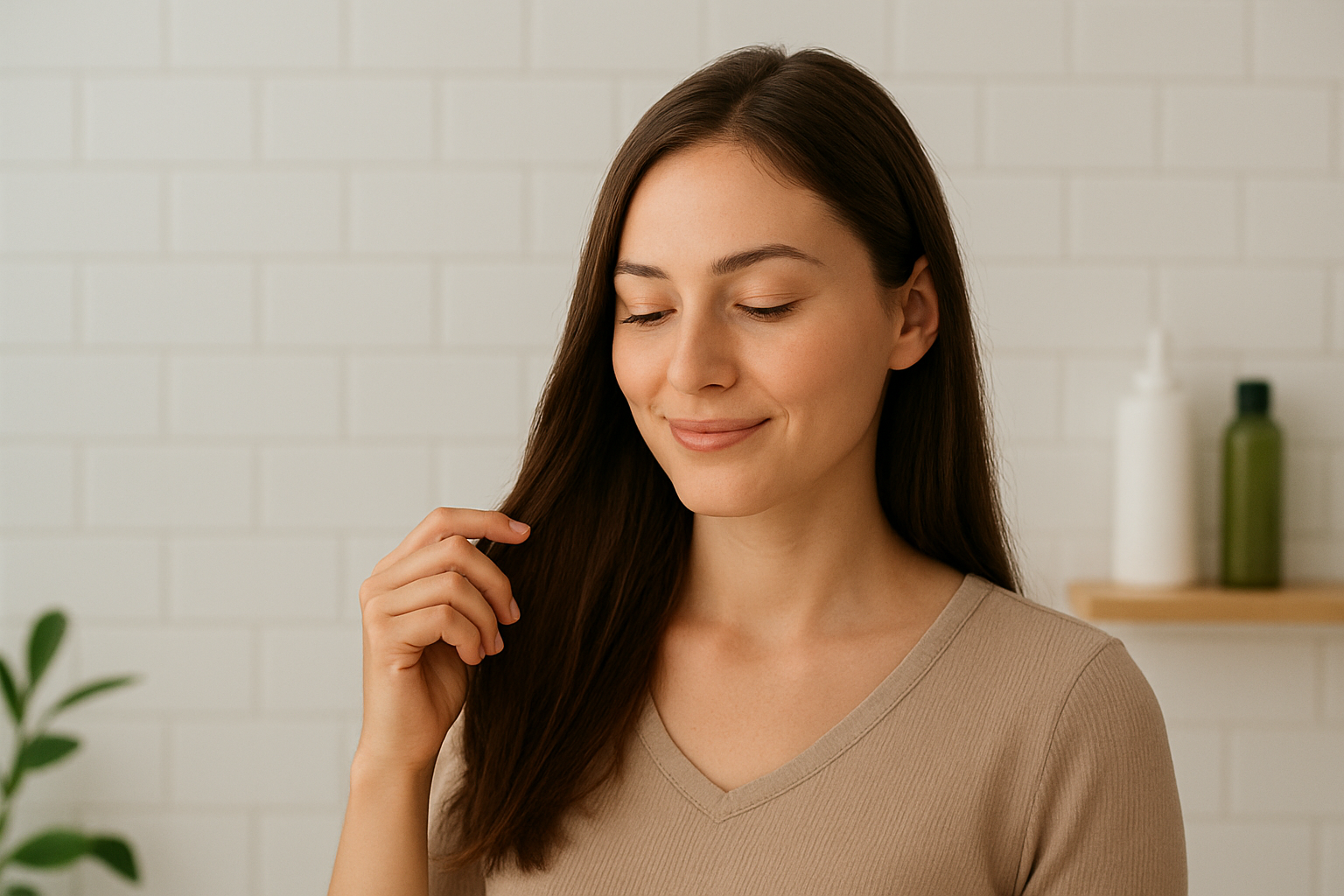Taking care of your hair doesn’t have to be overwhelming or complicated. With so many products and techniques available, it’s easy to feel lost when trying to decide what works best. But here’s the truth: a good hair care routine can be simple, effective and tailored to your needs. Whether your hair is straight, wavy, curly, or coily, starting with a clear and manageable plan will set you up for healthier, shinier and more beautiful hair.
This beginner’s guide will walk you through the essentials of building a simple hair care routine that you can actually stick to.
What’s Your Hair Type?
Before choosing products or creating a routine, it’s important to understand your hair type. Each type has different needs:
- Straight hair tends to get oily faster and usually benefits from lighter shampoos and conditioners.
- Wavy hair may need balancing products that hydrate without weighing the hair down.
- Curly hair requires more moisture to keep curls defined and frizz under control.
- Coily hair thrives with rich creams and oils to maintain softness and prevent dryness.
Pro tip: Pay attention to how your scalp feels. If it gets oily quickly, focus on gentle cleansing. If it feels tight or dry, nourishing shampoos and scalp care should be your priority.
Step 1: Cleansing Your Hair
Washing your hair is the foundation of any routine. The goal is to remove dirt, oil and product buildup without stripping away all the natural oils.
- Frequency: 2–3 times per week works for most people, but this can vary depending on your hair type and lifestyle.
- Shampoo choice: Look for sulfate-free shampoos if you want something gentle. If you have dandruff or scalp issues, choose formulas that target those concerns.
- Technique: Focus shampoo on your scalp, not the ends, since the scalp produces the most oil.
Step 2: Conditioning for Hydration
Conditioner restores moisture, smooths hair cuticles and makes detangling easier.
- Apply conditioner mainly to mid-lengths and ends, not the scalp.
- Leave it on for at least 2–3 minutes before rinsing.
- For curly or coily hair, consider using a leave-in conditioner to add extra hydration.
Beginner’s tip: If your hair feels weighed down, try using conditioner only on the very ends.
Step 3: Weekly Treatments
Adding a weekly treatment can make a big difference in your routine.
- Hair masks for deep hydration and repair.
- Clarifying shampoos once a month to remove buildup from styling products.
- Scalp scrubs or oils to promote circulation and a healthier scalp.
Step 4: Detangling Without Damage
How you detangle your hair is just as important as the products you use.
- Always detangle hair gently using a wide-tooth comb or a brush designed for wet hair.
- Start at the ends and work your way up to avoid breakage.
- Apply a leave-in conditioner or detangling spray to make the process easier.
Step 5: Drying and Styling
Drying your hair correctly helps maintain health.
- Air-drying is the most gentle method.
- If you use a blow-dryer, keep it on a medium heat setting and always use a heat protectant spray.
- Avoid rough towel drying, use a microfiber towel or a cotton T-shirt instead to minimize frizz and breakage.
Step 6: Protecting Your Hair
Protection is the secret to long-term hair health.
- Heat protection: Always apply a heat protectant before styling with hot tools.
- UV protection: Use products with UV filters if you spend time in the sun.
- Night care: Sleeping on a silk or satin pillowcase reduces friction and keeps hair smoother.
Newbie Errors: What Not to Do from the Start
- Overwashing: Stripping your hair of natural oils can lead to dryness and frizz.
- Skipping conditioner: Even fine hair needs hydration.
- Frequent high-heat styling: Can affect hair’s texture over time
- Ignoring scalp care: Healthy hair starts with a healthy scalp.
Case Study: Emma’s Journey to a Simple Hair Routine
When Emma first started her hair care journey, she felt completely overwhelmed. She had tried countless products she’d seen online: shampoos that promised volume, conditioners for shine, serums for frizz, but nothing seemed to work. Her bathroom shelf was full, yet her hair felt dry, heavy, and lifeless.
After realizing that more products didn’t necessarily mean better results, Emma decided to simplify. She identified her hair type as wavy and slightly dry, and built her new routine around that.
Here’s what she changed:
- She switched to a sulfate-free shampoo and began washing her hair just twice a week.
- She started using a lightweight moisturizing conditioner, focusing only on her mid-lengths and ends.
- Once a week, she incorporated a hydrating hair mask weekly to help maintain softness.
- She stopped blow-drying daily and let her hair air-dry most days, using a heat protectant spray only when styling.
After a few weeks, Emma noticed her waves looked more defined and her hair felt healthier.
Her biggest takeaway?
“I learned that consistency and simplicity make all the difference. Once I simplified my routine, my hair started feeling and looking healthier.”
Putting It All Together
Creating a simple hair care routine doesn’t mean following strict rules, it’s about finding what works best for your hair and lifestyle. By focusing on cleansing, conditioning, protection and a few key products, you’ll give your hair the foundation it needs to look its best every day.
Consistency is more important than perfection. Start small, listen to your hair and adjust as you go. With time, your routine will feel effortless and your hair will thank you for it. If you experience persistent dryness or hair loss, it’s always best to consult a professional stylist or dermatologist for personalized advice.
Disclaimer:
The information in this article is for educational and general self-care purposes only. It does not replace professional hair or dermatological advice. Individual results may vary depending on hair type, condition, and external factors.
